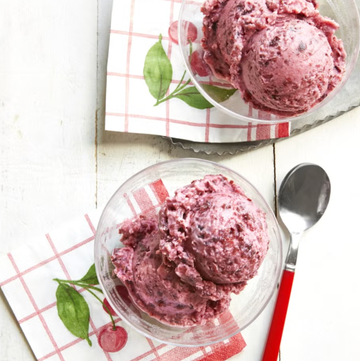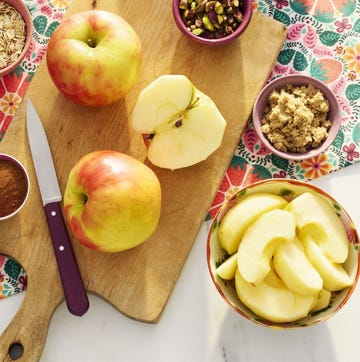
Yields:
1 - 2 c.
Prep Time:
10 mins
Total Time:
10 mins
If there's one sauce that you should learn how to make, it's béchamel sauce. It may sound fancy, but this sauce is really easy and extraordinarily versatile. In fact, if you've ever made homemade macaroni and cheese, biscuits and gravy, or a croque monsieur sandwich, odds are, you've made it before. It's the base of some of the best creamy dishes, and today I'm going to show you how to make it.
Béchamel sauce starts with a roux made of equal parts fat and flour—in this case butter and flour. Then you add the milk, and, after plenty of whisking and a few simple seasonings, it becomes a smooth, thick, and creamy sauce that can be used tons of different ways. You can stir in shredded cheddar for a cheese sauce, you can add shredded chicken and veggies to make the filling for a chicken pot pie, or you can layer it into your lasagna for extra decadence—and that's just the beginning! Once you learn how to make a great béchamel, you're well on your way to mastering an abundance of dishes.
What kind of milk do you use for béchamel sauce?
Whole milk is ideal for creating a rich, creamy sauce. For an even more indulgent sauce, you can replace a portion of the milk with half-and-half or add a splash of heavy cream. Alternatively, if you prefer a lighter sauce, two percent milk can be used.
Can béchamel sauce be used on its own, or should it always be mixed with other ingredients?
Béchamel sauce can stand on its own, especially in dishes like gratins and lasagnas, or when spooned over croque monsieur sandwiches. But it's also a spectacular base for other sauces like Mornay sauce, which is a fancy term for your good ol' classic cheese sauce. This recipe yields between 1 3/4 cups and 2 cups of béchamel sauce, and depending on what you're making, you can add additional ingredients or not.
How do you prevent béchamel sauce from becoming lumpy?
A whisk is your best friend! The best thing you can do for béchamel sauce is whisk it constantly to smooth out any lumps, especially when adding the milk. A rubber spatula helps, too, in scraping the sides and bottom of the saucepan. When it comes to the milk, add it gradually and be sure it's room temperature. Cold milk can cause clumps, but room temperature or even warm milk will give you a smooth, silky sauce. If you are left with some lumps, strain the sauce through a fine mesh sieve to remove them.
How do you thicken or thin béchamel sauce?
It's easy. If it's too thick, add a splash of milk. If it's too thin, let it simmer a little longer until you reach your desired consistency.
Can béchamel sauce be made ahead of time and reheated?
Yes, béchamel can be kept covered in the refrigerator for up to five days. If storing, press plastic wrap directly onto the surface of the béchamel so it doesn't form a skin. Reheat it in a saucepan over medium-low heat until it gently simmers. Because the sauce thickens as it cools, you may need to loosen it up with a few tablespoons of milk until you reach the right consistency. You can also freeze béchamel sauce for up to three months. Let it thaw overnight in the refrigerator before reheating.
Advertisement - Continue Reading Below
Ingredients
- 3 Tbsp.
salted butter
- 3 Tbsp.
all-purpose flour
- 2 cups
milk, at room temperature
- 1/4 tsp.
kosher salt, plus more to taste
- 1/4 tsp.
ground white pepper
- 1/4 tsp.
freshly grated nutmeg (optional)
Directions
- Step 1In a medium saucepan, heat the butter over medium-low heat until melted and the foaming subsides. (Do not let it brown.) Whisk in the flour until well combined. Cook, whisking constantly, until the raw flour smell disappears, 1 to 2 minutes.
- Step 2Slowly stream in the milk, whisking constantly, until no lumps remain. Increase the heat to medium and continue whisking and occasionally scraping the bottom and sides of the saucepan with a rubber spatula until the sauce thickens, coats the back of a spoon, and resembles thin white gravy, 4 to 5 minutes. Whisk in the salt, white pepper, and nutmeg, if using.
- Step 3Use the béchamel immediately, or transfer to a medium bowl, place a piece of plastic wrap directly on the surface so it does not form a skin, and refrigerate up to 5 days.
Advertisement - Continue Reading Below

How to Pick the Best Apples for Homemade Pie
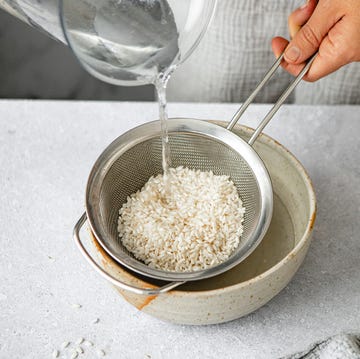
Should You Rinse Rice Before Cooking?
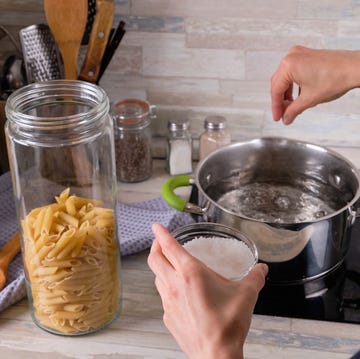
Should You Salt Pasta Water?
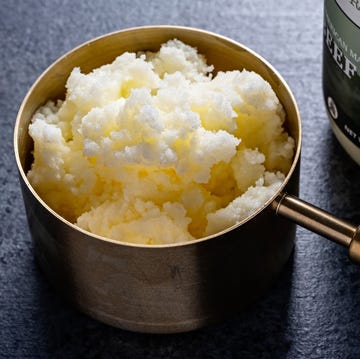
What Is Beef Tallow and How Do You Use It?
Advertisement - Continue Reading Below
Advertisement - Continue Reading Below

